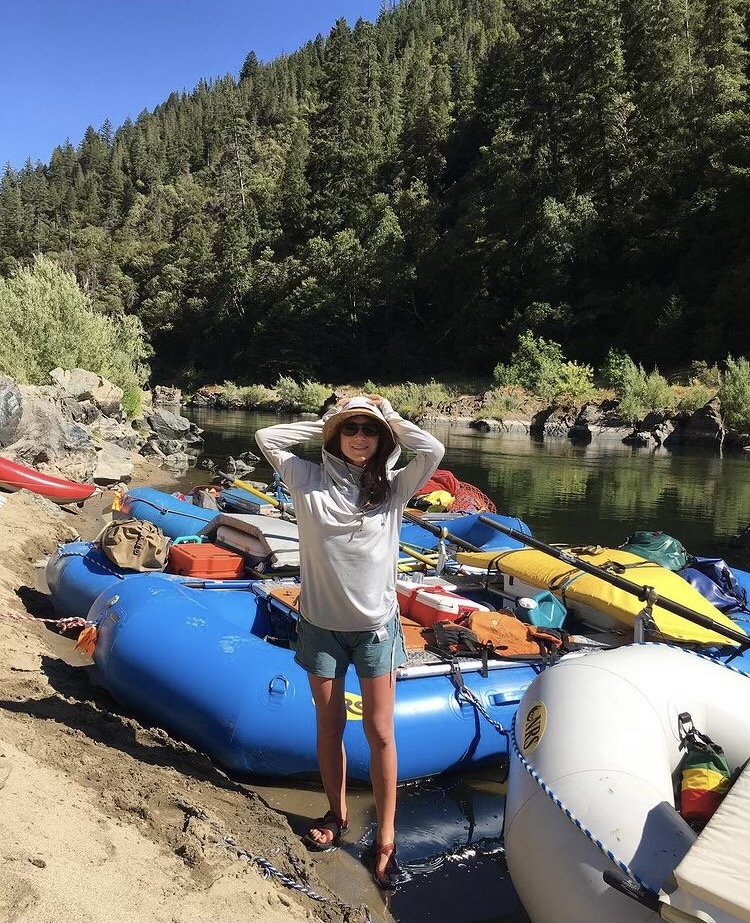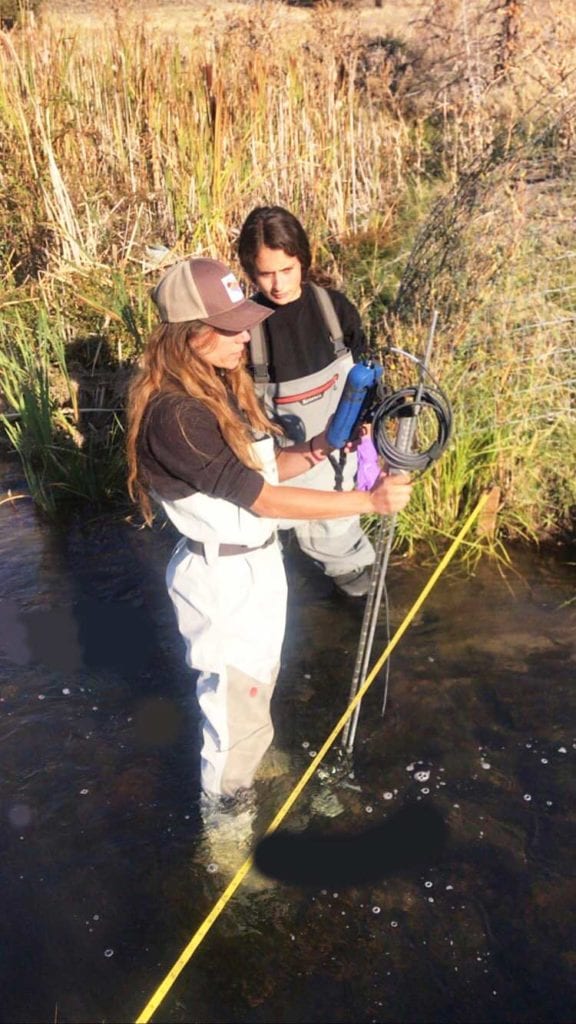Streamside Story: Victoria Fischella
James Parsons

“I grew up in Joshua Tree, California, where rivers don’t really exist,” she explained. “When I was 16, I decided I wanted my life to revolve around water.”
Victoria’s family made a yearly pilgrimage to southwestern Oregon, where they would raft the Wild and Scenic stretch of the Rogue River. One trip down the Rogue River particularly shifted her desires in life, and that was the moment she knew that she wanted to make her passion for rivers more than a hobby.

Restoration
Today, Victoria works as a River Restoration Specialist for Soil and Water Conservation Districts in central Oregon.
“I feel lucky that so many ranchers and farmers voluntarily want to prioritize the health of their streams and creeks. They know firsthand the importance of water in a high desert ecosystem,” said Fischella.
Much of her work revolves around riparian restoration programs, which aim to restore and improve water quality and quantity in agricultural lands and provides incentives for private landowners to do so.
As part of these programs, farmers, ranchers, and other landowners in Central Oregon voluntarily approach Victoria about restoring their streams, and together they create a conservation plan. They might strategically fence a stream to keep cattle off sensitive riparian areas, plant streamside vegetation native to the area, or remove weeds and invasive species.
If the landowner is interested in something more involved, they might reconstruct the river or stream so it follows its natural meander. Many rivers and streams were channelized in the 1960s in an effort to reduce flooding; However, due to high water velocity, these systems have begun to eat themselves alive. Without their natural S (sinuous) curves, water moves through them too quickly, and many creeks that once flowed year-round have now disappeared. By reconstructing the natural meander of a river or stream, Victoria and those who work with her can improve water retention and reconnect floodplains in Central Oregon.
Research
Victoria also puts her expert rafting skills to work through an ongoing project led by the Middle Deschutes Watershed Council in partnership with the Confederated Tribes of the Warm Springs Reservation and Cramer Fish Sciences. The project focuses on understanding the distribution of Pacific lamprey in certain areas of the Deschutes River Watershed. For millennia, these aquatic, eel-like species were a traditional food for tribal members in the Northwest. However, Pacific lamprey populations have been precipitously declining due to changes in habitat, lack of upstream passage, and reduced river flows amongst other threats. Although lamprey have been around for a long time, as in 450 million years, little is known about their distribution below Pelton Dam. The project is funded through Pelton Round Butte’s Lamprey Research Fund.
Specifically, Victoria and the team of scientists have set out to discover where Pacific lamprey use the main stem of the Middle and Lower Deschutes River as well as certain tributaries of the Deschutes. To gather data, the team goes on rafting trips to collect water samples. During the last research trip Victoria went on, in November 2020, the temperature barely crawled above freezing and Victoria recalled, “one morning, our half-and-half froze solid sitting out of the cooler.” The next trip is scheduled for June 2021.
On these trips, Victoria is in charge of guiding the boat while the team of scientists collect water samples at prescribed locations they’ve strategically decided upon. This kind of raft guiding is not for the faint of heart, as Victoria has to stop every 500 meters and row backwards to keep the boat in place while the team collects samples. Later, they’ll send these samples to labs to be analyzed in search of Pacific lamprey eDNA.
Recreation
Victoria’s passion for rafting is not dampened by the fact that it’s part of her work. She already has five recreational trips on the books for the 2021 in spring, summer and fall.
Victoria believes rafting offers an important opportunity to build a connection with nature and water. As she put it, “Rafting is the perfect vessel for getting people out in these wild places where otherwise they’d have no association. Without association it’s harder for people to care about protecting wild places.”
Victoria’s Hopes
Legislation like Sen. Wyden and Sen. Merkley’s River Democracy Act of 2021 can go a long way toward protecting Oregon’s precious water resources, which drive tourism and recreation, provide clean drinking water to millions of Oregonians, and offer critical habitat to Pacific salmon, Pacific lamprey and other important species.
“This designation is only one step of the many needed to ensure water security for our future generations. Efforts of protected designation only go so far if those systems aren’t properly managed. We as a human species have deconstructed many of our ecosystems beyond their ability to self-repair.”
Here are some additional steps towards large scale river restoration that Victoria would like to see addressed:
- The near extirpation of beaver in our river systems and the role they play in proper river function.
- The large-scale western juniper encroachment that has depleted water from Oregon’s high desert soils.
- And the over implementation of dams in our river systems and their lack of effective passage for salmonids and Pacific lamprey.
“Oregon ranks in second place for number of designated Wild & Scenic River miles, Alaska being first, and yet only 1.7% of Oregon’s rivers are currently designated as Wild & Scenic. The legislative proposal of the River Democracy Act of 2021 is needed to ensure water for future generations and maintain connectivity to our state’s watersheds.”
This blog post is the first of a series of Streamside Stories we will be sharing to highlight people who are passionate about Oregon’s desert rivers and streams.
Key Concepts in Riparian Restoration
Whether you’re learning about restoring streams and rivers for the first time, or you’re a life-long beaver believer, this list of resources will provide additional information on both how and […]
Read MoreRestoring Lands and Waters
Oregon Natural Desert Association restores key habitats across Oregon’s high desert and advocates for management to support healthy ecosystems, clean water and high quality wildlife habitat. We partner with public […]
Read More